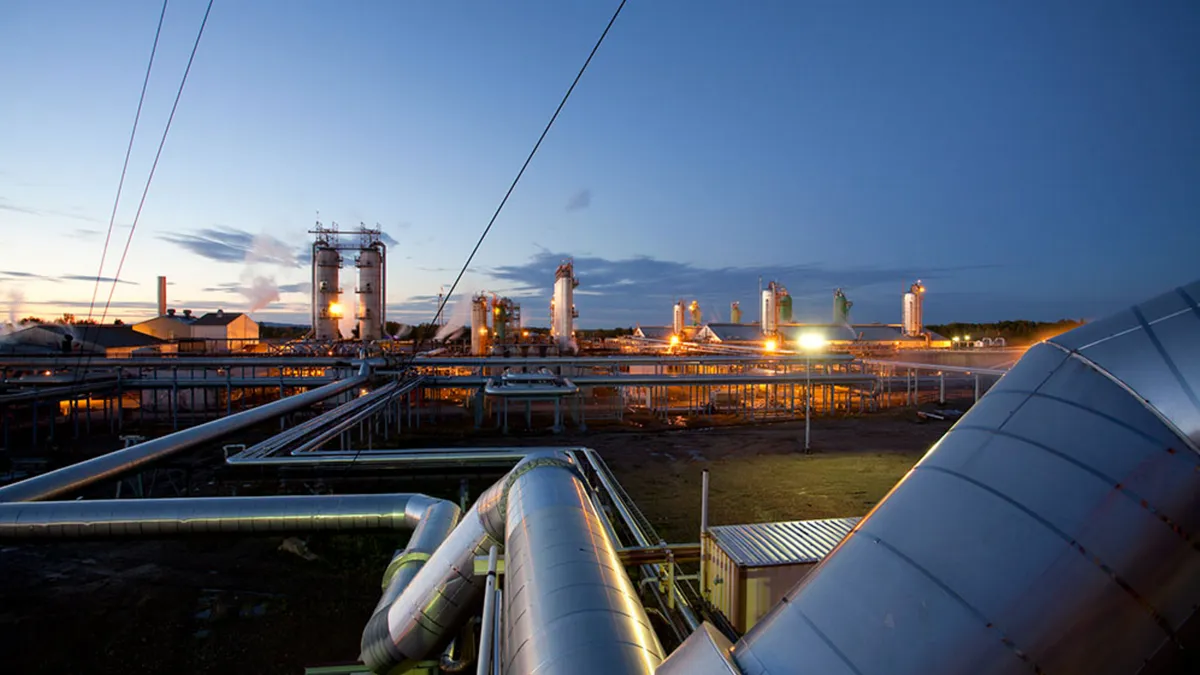Dive Brief:
- Despite the rise of renewable energy and the struggles of older plants such as coal, the United States' energy infrastructure remains dominated by fossil fuels, according to the Federal Energy Regulatory Commission's (FERC) May infrastructure update.
- About 2.1 GW of new gas capacity came online in May, according to the report, compared with 312 MW of solar and no wind.
- The U.S. Energy Information Administration reports that fossil fuels' share of energy consumption last year was the lowest in more than a century — but it was still more than 80%.
Dive Insight:
For all the news of clean energy replacing older generation, FERC's infrastructure report illustrates that gas and coal are large and entrenched. While new gas plants are increasingly being threatened by renewables and energy storage, particularly in California, a broader view shows plants are still going strong and the decline of natural gas may be overstated.
There were 40 new generating units brought online in May, with a total capacity of 2,455 MW, giving natural gas about an 85% share of new resources.
Year-to-date numbers are more positive for the renewables industry, but also show a decline in the pace of generation construction. Since the beginning of this year, there have been 6,646 MW of new gas capacity brought online, compared to 1,956 MW of wind capacity and 1,921 MW of new solar.
So far this year, 10,732 MW of new capacity have been brought online in the United States. This marks a decline from the same period of 2017 when more than 14,000 MW of new capacity came online. The drop can be seen in all of the major resources, but wind was hit hardest. New wind capacity dropped nearly 35% between the first five months of 2017 and 2018.
No new coal capacity was added in the last one and a half years.
Natural gas' share of total installed capacity in 2018 sits at about 43.5%, followed by coal (23%), nuclear (9%), hydro (8.5%), wind, (7.7%), oil (3.5%), and solar (2.8%).
But fossil fuels' share of the United States' overall energy consumption, including transportation and other industries, is declining, according to the U.S. Energy Information Administration.
"The fossil fuel share of total U.S. energy consumption in 2017 was the lowest share since 1902, at a little more than 80%, as U.S. fossil fuel consumption decreased for the third consecutive year," EIA said in a blog post this week.
Natural gas consumption dipped 1.4% in 2017, "a change from recent trends," EIA said. While coal consumption has declined in eight of the past 10 years, gas consumption has increased in eight. "Overall, U.S. consumption of natural gas increased by 24% from 2005 to 2017," EIA said.















